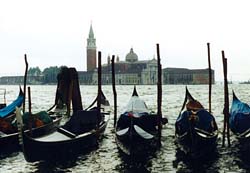
Usually, I focus my attention on repair work, resurfacing and veneer coat plastering topics. But when a brochure came across my desk recently, I had to stop and take a second look. Then I bought a ticket to Miami and went to see this stuff in person! I'm talking about Venetian plaster. What some refer to as the best of the best in wall and ceiling finishes. The company I went to visit was Firenze Enterprises.
In photo #1, from left to right, I am with Alfonso Diaz, a great guy who has applied a ton of Venetian plaster around Miami. To my right is Ray Hoafat and Paul Hoafat, owners of Firenze Enterprises). Ray and Paul, the owners of the company, treated me like family right from the start. In a short time, they showed me how the materials are applied and worked with. Paul also took me around the Boca Raton area to see some completed projects that they worked on. I must say that the finishes that can be produced with these products are stunning.
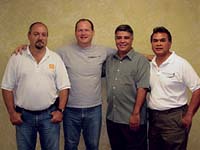
What I've seen
I had looked at venetian plasters before this. However, it seemed that all of them either had eight or nine complicated steps to follow, including sanding inbetween coats and more sanding to achieve a polished look, or they used some obnoxious chemicals or sealants that had to be sprayed on with an airless spray gun. Not what I was looking for. What I had found was a product that was easy to use, didn't require sanding, was all natural and that had a high profit margin. I found all of these in Rivesto Marmorino. Here's some of the highlights that I found interesting and more importantly, profitable.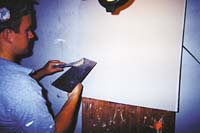
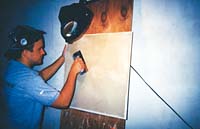
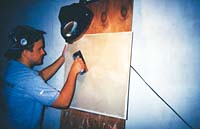
The big bambino
Marmorino can go straight over existing smooth walls that have a latex paint on them. For new construction, a Level 5 Finish is recommended, with a latex primer applied over the surface to be finished. Then the Marmorino is ready to spread on.
What impressed me the most is that this is quite different from any traditional plastering that I've done. The trowel strokes are short, with the surface being worked from every direction with one side of the trowel. The trowels used are special tools designed for this type of work. They have plastic handles that make the trowels very lightweight and the blades are of high-grade stainless steel. And when the third coat is troweled, a spectacular effect starts to happen. I'd say that watching this work done is like watching an artist at work. The areas being worked are not the regular type of construction scene. There are not a lot of tools or equipment around simply one or two applicators working out of a single bucket. I also found that the toweling that is required with this material is much easier on your arm than doing smooth coat plastering. With this there is no water toweling or hard toweling as you might expect.
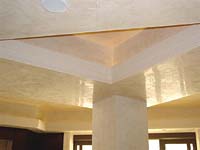
I tried to take some pictures of some projects Alfonso had completed, to display what the product has to offer. In photo #5, there's an example of an exclusive apartment complex where Marmorino has been used on both the ceiling and wall areas. They have a rich gleaming look! In photos #6 and #7 are great examples of the look that this finish provides, making everything around it look even better. The random patterns add luster and beauty, and at the same time give the areas a warm inviting feel.
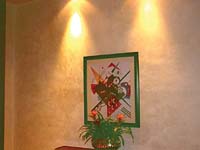
Something else: Instead of working directly with the homeowner and contractor, it's suggested that you work with interior designers and decorators, as well as architects. These groups are constantly on the lookout for unique, classy products that they can offer to their clientele. As the applicator of these products, you are in a great position to simplify your life by being represented in this way. You can work with a handful of these individuals instead of the large number of contractors and homeowners that you might ordinarily work with. I came back from Florida and had to test this out myself. I was extremely pleased with the reaction. My area of the country is quite conservative, the Midwest, and yet the interior decorators I showed this to went wild over it!
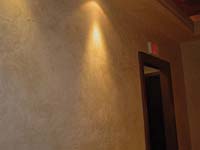
If interested in learning more about Venetian plaster, write to me in care of this magazine. Or e-mail me at robin@plasterzone.com. I'll be happy to give the details on how to get the products and training needed to take your business to the next level. Also: Keep in mind that I am interested in interviewing long-time plasterers for some upcoming columns. For those that have been in the business 25 years, let me know.
This month's winner of the Plaster Man T-shirt is Christy Hightower and last month's winner was Robert McGarry. I appreciate the letters and e-mails and will include some of them in November's column. Until then, Ride the White Wave!


Report Abusive Comment